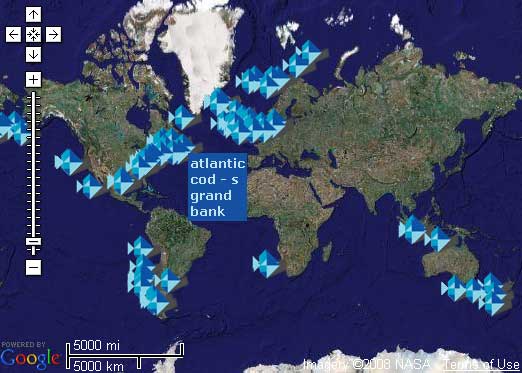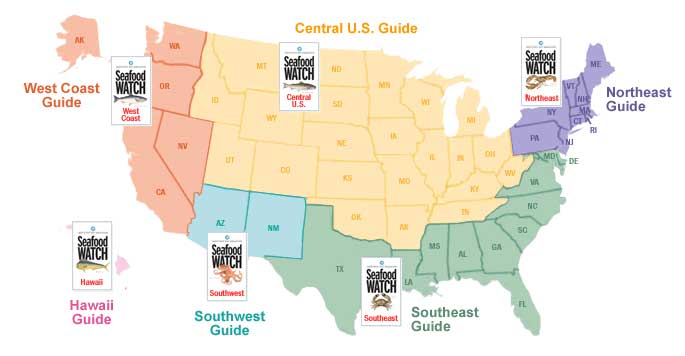The world’s fisheries are being depleted at an alarming rate, but they don’t have to be. Unregulated and unsustainable fishing practices pollute waters, decimate fish populations and co-dependent species. Recently a number of leading Ocean groups have released guides to help consumers select sustainable fish – notably the environmental defense fund’s pocket sushi selector (pdf), the Monterey Bay Aquarium‘s Pocket Sushi Guides which are available for each region of the US (see below). These informative brochures encourage consumers to begin conversations with their sushi chefs, as many varieties of fish have vastly different impact whether they are farmed in one place or another, or whether they are caught wild or not. Some of the worst offenders are Freshwater Eel or Unagi because they are farmed not from eggs but from wild-caught fish, and Bluefin Tuna because they are almost extinct in their North Atlantic fisheries. Remarkably sustainable fish, on the other hand, include sardines, bay scallops and dungeness crab. For those consumers that can’t learn the intimate details of their fishmonger’s sourcing strategies, on the other hand, some de-centralized attempts at self-regulation have emerged – such as Fishsource.org, where fishermen can describe their practices and provide map links to their fisheries (above). With buy-in from retailers and distributors, it could one day be possible for such provenance aggregators to provide the leverage necessary to ensure that suppliers are compliant with standards and practice transparency – but we’ve got a long way to go.
fish map
This entry was posted in food, maps, open objects, possessed products, traceability. Bookmark the permalink. Both comments and trackbacks are currently closed.

